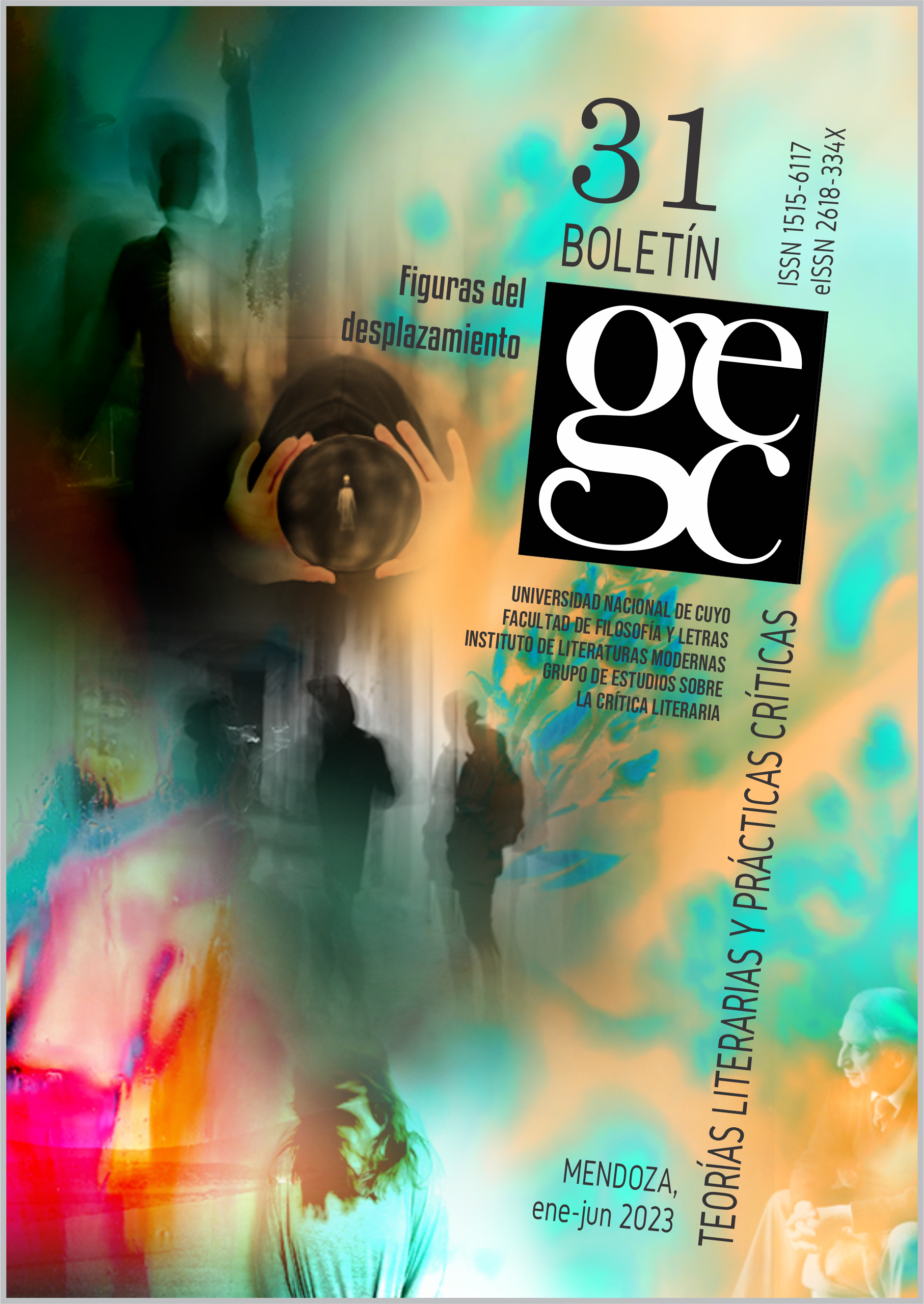To make live- to let die- to make flee: Carla’s flight in How to disappear completely by Mariana Enriquez
DOI:
https://doi.org/10.48162/rev.43.033Keywords:
faciality, biopolitics, monstruosity, lines of flight, Mariana EnriquezAbstract
In this article we approach Mariana Enriquez novel’s How to dissapear completely. We stop at the construction of Carla as a figure of the monstrous because we consider that from her presence in the story the social and political meanings that a face entails are made visible. The text allows us to think about what is generated when what is expected of a face is stressed and it flees from the orders assigned by the faciality machine (Deleuze & Guattari, 2002). Faced with the biopolitical to make live and let die (Foucault, 1991), we read Carla’s deterritorializing movements from the Deleuzian to make flee, as a force that allows us to trace lines of flight. Since flight is a third term unthought of by doxa (Barthes, 2004), we believe that Enriquez’s text allows us to think about the possibilities of the abject in the dispute and problematization of the politics of the face.
References
Agamben, Giorgio (2006). Lo abierto. El hombre y el animal. Buenos Aires: Adriana Hidalgo.
Agamben, Giorgio (2010). Medios sin fin: Notas sobre la política. Valencia: Pre-textos.
Agamben, Giorgio (2017). El poder soberano y la vida desnuda: Homo Sacer I. Buenos Aires: Adriana Hidalgo.
Barthes, Roland (2004). Lo Neutro. Notas de Cursos y Seminarios en el Collège de France, 1977- 1978. Buenos Aires: Siglo XXI.
Boero, María Soledad (2009). “Los misterios del rostro. Notas sobre el desierto y su semilla de Jorge Baron Biza”. Revista Iberoamericana, vol. LXXV, n. 227, abril-junio. 523-538. Disponible en: https://revista-iberoamericana.pitt.edu/ojs/Iberoamericana/issue/archive
Boero, María Soledad (2017). Trazos impersonales. Indagaciones en torno a lo heterobiográfico en Jorge Baron Biza y Carlos Correas. Villa María: EDUVIM.
Boero, María Soledad (2019). “Rostros y umbrales: algunos aportes en torno a tres materiales estéticos”. Marcelo Casarin (coord.), Derivas de la literatura del siglo XXI. Córdoba: CEA, Colección Posdoc n. 7. 79-96.
Deleuze, Gilles y Félix Guattari (2002). Mil mesetas. Capitalismo y esquizofrenia. Valencia: Pre-textos.
Enriquez, Mariana (2018). Cómo desaparecer completamente. Buenos Aires: La Página.
Esposito, Roberto (2011). Bíos. Bipolítica y filosofía. Buenos Aires: Amorrortu.
Foucault, Michael (1991). Historia de la sexualidad 1. La voluntad de saber. Buenos Aires: Siglo XXI.
Giorgi, Gabriel (2009). “Política del monstruo”. Revista Iberoamericana, vol. LXXV, n. 227. 323-329. Disponible en: https://revista-iberoamericana.pitt.edu/ojs/Iberoamericana/issue/archive
Torrano, Andrea (2014). “Animalización y monstrificación en la biopolítica. Una consideración teratopolítica del nazismo”. Revista latinoamericana de estudios críticos animales, vol. 2. 90-112. Disponible en: https://revistaleca.org/index.php/leca/article/view/17
Zourabichvili, François (2007). El vocabulario de Deleuze. Buenos Aires: Atuel.
Downloads
Published
How to Cite
Issue
Section
License
Copyright (c) 2023 María Julieta Alós

This work is licensed under a Creative Commons Attribution-NonCommercial-NoDerivatives 4.0 International License.
Aquellos autores/as que tengan publicaciones en esta revista, aceptan los términos siguientes:
- Los autores/as conservarán sus derechos de autor y garantizarán a la revista el derecho de primera publicación de su obra, el cual estará simultáneamente sujeto a la Licencia de reconocimiento de Creative Commons que permite a terceros compartir la obra siempre que no se use para fines comerciales, siempre que se indique su autor y su primera publicación en esta revista, y siempre que se mencionen la existencia y las especificaciones de esta licencia de uso.
- Los autores/as podrán adoptar otros acuerdos de licencia no exclusiva de distribución de la versión de la obra publicada (p. ej.: depositarla en un archivo telemático institucional o publicarla en un volumen monográfico) siempre que se indique la publicación inicial en esta revista y se cumplan las otras condiciones mencionadas arriba.
- Se permite y recomienda a los autores/as difundir su obra a través de Internet (p. ej.: en archivos telemáticos institucionales o en su página web) antes y durante el proceso de envío, lo cual puede producir intercambios interesantes y aumentar las citas de la obra publicada. (Véase El efecto del acceso abierto).








